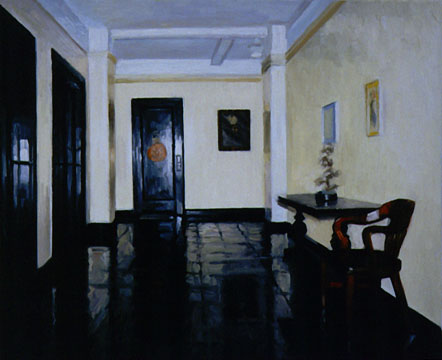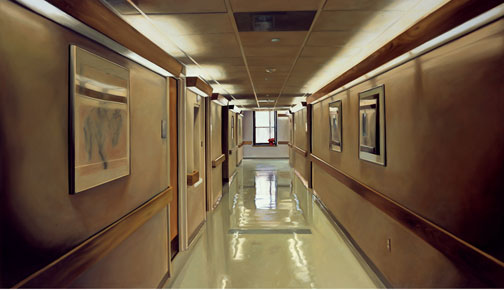
|
Lorna Mills and Sally McKay
Digital Media Tree this blog's archive OVVLvverk Lorna Mills: Artworks / Persona Volare / contact Sally McKay: GIFS / cv and contact |
View current page
...more recent posts
For a report on last Friday's critical mass in New York City, read this excellent blog post by Stillweride (thanks Rico). Recent events in NYC remind us of the inherent friction between police (historically hired by the state) and common people (historically a threatening faction that those in state control command police to keep in line). The cops have been picking on New York's critical mass ever since the protests there in August. When the cops pick on you, it's not fun. Toronto's critical mass ride has had its share of problems with police as well. For some reason the utterly utopic mandate of the event ("it's just a bike ride") gets under the skin of police-people who seem to want to eradicate (and criminalize) unpredictable behaviour of any kind. It's fair to say, in Toronto anyhow, that simply being a visible minority may more often than not put you on the cop's abornmality radar. It's all inordinately frustrating.
If you are at all interested in the civics of police control, you will very much enjoy Min Sook-Lee's amazing documentary, Hogtown. I just got to see it at the Toronto's most excellent Hot Docs festival. Min Sook-Lee is smart smart smart. She got a film crew into the Police Services Board right at the point when the new mayor of Toronto, David Miller, was elected in November of 2003. It was clear that there was tumult brewing, and indeed the chaos hit just in time for her cameras. The story is about a city council divided between those who want police accountability, and those who want to give cops free reign. In a short space of time there was a smear campaign, exposure of endemic police corruption, unrest about racial profiling, yelling matches about helicopters, blatant disregard for the democratic process, and heroic feats of courage and determination. I have huge respect for Alan Heisey (who I posted about earlier) and councillors Pam McConnell and John Filion who all stuck to their guns despite extraordinary stress levels and the infuriating, babyish behaviour of colleagues such as councillors Case Ootes, Rob Ford, and Giorgio Mammoliti. Even if you aren't involved in local politics, you will find the film to be a nail-biter and a shocking reveal of some elected officials' tenous grasp of democratic principles. The cameras catch everything, from back-room whisperings to full-fledged shouting matches in the council chambers. See it if you get the chance!
Tino took a beautiful photo of his bike and my cat and owl for bike lane diary! I love it.

Rembrandt in New York, by Joanne Tod, 1999. Image from Tod's pages on the CCCA website.

Hospital, by Damien Hirst, 2004. Image from David Cohen's review at artcricial.com.
I saw work from Damien Hirst's painting show (see previous post) projected at a recent symposium. They instantly reminded me of the Canadian painter, Joanne Tod. I've been a big fan of her work since I first saw it in art school, back in the 80s. She has making smart, self conscious ugly/beautiful paintings for a long time. From Tom and Joester's respsonses I get the impression that Hirst's paintings are uglier than Tod's. Tod frequently paints scenes of opulence, and the paint handling itself teeters between lush and downright scratchy. How to position this painting? Is it is a cynical statement about the empty gesture of the "artists hand"? Is it a jab at acquistion and commodity? Or is it simply a grab for those collector dollars? In 2002 Tod put on a show called Vanity Fair, in which she rendered portratis of a bunch of Toronto's big-fish-small-pond personalities as characters from the novel. Shinan Giovanni (then gossip columnist for the National Post) wrote in Lola magazine: "...when Tod confessed that I was to be one of the subjects in her show, I was instantly flattered and made to blush. This, you see, is the power of the portrait artist: the subjects always think they're being made love when, in fact, sometimes they're just being screwed."
The same goes for the art audience when confronted with slick, smart, po-mo painting. Are we being screwed? If we are, maybe we like it? It's odd that Damien Hirst has chosen to replay this dynamic in paint, where the epitomes of market cynicism and self-reference have been visited and revisited thoroughly over the past 20 years. In this context, I understand Kimmelman's "moral scold" (as Tom called it in yesterday's comment thread). Granted, Hirst's subject matter speaks to a contemporary level of desperate detachment. But besides offering a historyical study of postmodernism-in-paint, what could Hirst be possibly saying with this treatment other than, simply, "buy this painting"?
On the other hand, maybe it is possible that ironic reference can fold so many times as to compact itself back into sincerity. If there is a contemporary youthful art market really interested in "earnestness, or at least the appearance of it" as Kimmelman suggests, and Hirst can deliver, then what's the problem? Are you "shallow and money-obessed" if you enjoy a painterly painting of a dissected brain, or a morgue, or a bleeding soccer hooligan? Or are you just a reader of magazines, watcher of television shows, disempowered and subjugated protestor of wars, believer that church and state should remain separated, post-AI-proto-cyborgian internet user, in short...an understandably depressed and yet participating member of contemporary western culture?